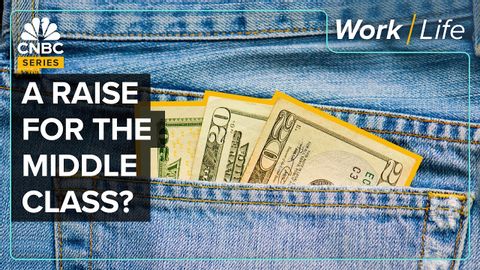中產階級的薪水為何都沒有增長? (Why Middle Class Wages Aren’t Growing)
VoiceTube 發佈於 2024 年 10 月 09 日  沒有此條件下的單字
沒有此條件下的單字- v.t.提升 ;使進步;促進
- n. (c./u.)提升
US /fɔrs, fors/
・
UK /fɔ:s/
- n.軍隊;力;強迫;武力;影響力;力量;警力
- v.t.被迫;強行打開;催生
US /dɪˈklaɪn/
・
UK /dɪ'klaɪn/
- v.i.彎曲至地面;傾斜
- v.t./i.下降; 減少
- n. (c./u.)品質、價格下降;衰退;詞形變化;斜坡
- v.t.拒絕;詞形變化
